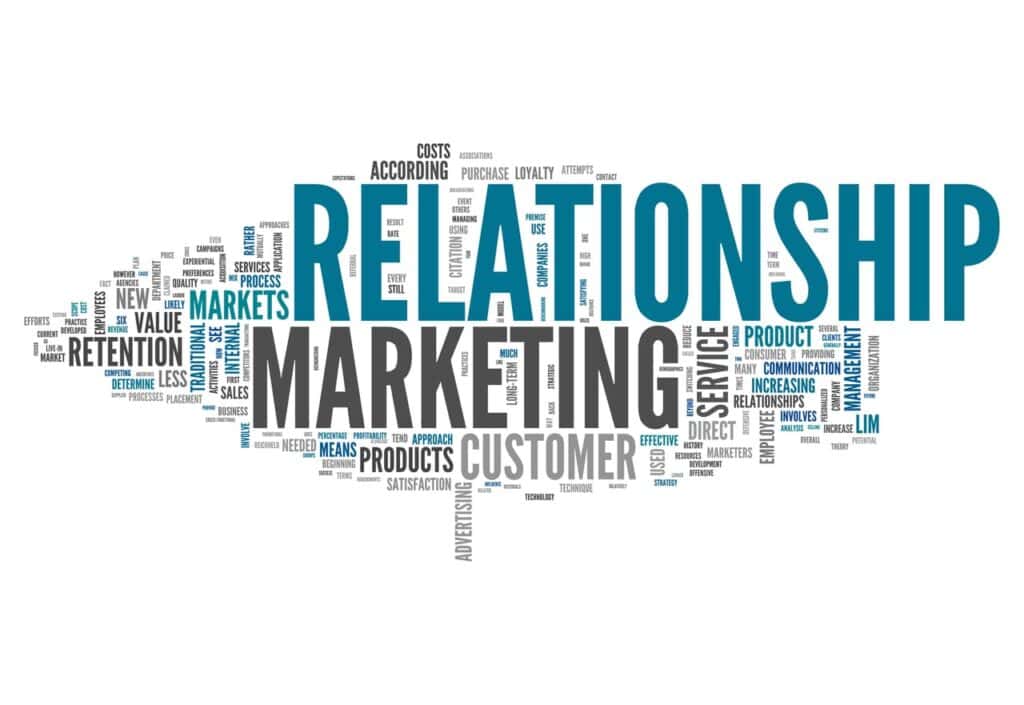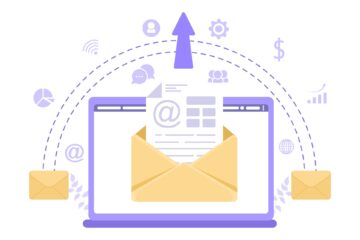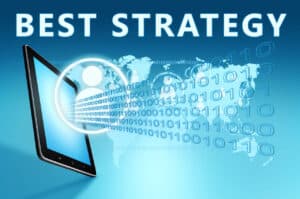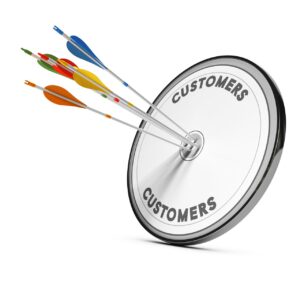Ever wondered why some field sales representatives consistently outperform their peers? Is it luck, or is there a method behind the chaos? The answer frequently rests in the art of personalization.
In today’s fast-paced business landscape, where every interaction can make or break a deal, personalization in field sales prospecting and marketing stands out as a beacon of success.
But what does it truly entail? Let’s embark on this journey to unravel the magic behind it.
Field Sales Prospecting and Field Sales Marketing
Field Sales Prospecting is the proactive process wherein sales representatives identify and engage potential customers or clients in the field, rather than waiting for leads to come to them.
This often involves researching potential markets, identifying key decision-makers within target companies, and then reaching out to them directly, usually through face-to-face interactions. The main aim is to turn these potential leads into real sales chances.
This approach is hands-on, demanding a strong grasp of the market, sharp observation, and the skill to quickly establish authentic relationships.
Field Sales Marketing, however, centers around promoting products or services straight to end-users in their surroundings. This could be at their homes, workplaces, or other non-retail spots.
It involves taking the product or service directly to the potential customer, showcasing it, addressing queries, and giving tailored solutions according to their needs. The core of field sales marketing is the one-on-one interaction between the sales representative and the potential customer, making it a very personalized marketing approach.
While both field sales prospecting and field sales marketing involve direct interactions with potential customers, they serve different stages of the sales funnel.
Prospecting is about identifying and qualifying potential leads, laying the groundwork for a sale. Marketing, meanwhile, is about presenting the product or service in the best possible light, persuading the potential customer of its value. In essence, prospecting can be seen as the precursor to marketing.
Once a potential lead has been identified and qualified through prospecting, field sales marketing steps in to nurture that lead, guiding them towards making a purchase decision.
Central to both field sales prospecting and marketing is the focus on creating authentic, individual relationships with potential customers. In prospecting, this means grasping the needs and issues of potential leads and ensuring the product or service fits those needs.
In marketing, this means tailoring the sales pitch to address potential customers’ particular worries, ensuring the value proposition is as clear and persuasive as possible. Both call for understanding the target market, strong communication skills, and the capacity to adjust and respond to unique field situations and challenges.
In the dynamic world of sales, where every interaction counts, mastering both prospecting and marketing is crucial for success.
The Essence of Personalization in Sales Prospecting
1. Enhanced Customer Engagement
Gone are the days when a generic sales pitch would suffice. In the present customer-focused environment, the solution to grabbing and keeping your audience’s focus is to personalize your approaches.
When you shape your message to meet the distinct needs and concerns of your potential customer, you’re not just delivering a sales pitch; you’re initiating a valuable conversation. This engagement level distinguishes you from rivals who stick to the generic approach.
Amazon and Netflix, for example, have raised the standard by using algorithms to offer personalized suggestions, leading to higher customer involvement and, in the end, more sales.
2. Builds Trust and Credibility
According to a Salesforce study, a significant 73% of customers anticipate sales representatives to comprehend their needs before the initial contact.
So, when you customize your approach, you’re conveying that you’ve done your research. This quickly cultivates trust and credibility, vital for a successful business relationship. Trust isn’t just given; it’s earned, and personalization is a powerful tool in earning that trust.
3. Higher Conversion Rates
To personalize doesn’t solely mean to make your prospect feel unique; it’s about prompting action.
By shaping your email or personal message to match your prospect’s particular needs and challenges, you boost the chances of them taking the intended action, whether it’s arranging a meeting, joining a webinar, or completing a purchase. The more fitting your offer, the more probable your prospect will agree.
4. Efficient Use of Resources
Think of personalization as the difference between fishing with a net and fishing with a rod. While the net may catch many fish, the rod targets the one that truly matters.
This is an efficient use of your resources, focusing your efforts on prospects who are more likely to convert. Tools like HubSpot CRM and Salesforce can help you segment your audience, enabling you to direct your resources more effectively.
5. Long-Term Relationship Building
Personalization isn’t a single tactic but a lasting strategy. By consistently delivering value that connects with your prospect, you’re not just finalizing a single sale; you’re welcoming continuous business opportunities.
This long-term relationship is often more valuable than any individual transaction, as it can lead to repeat business and referrals, which are gold mines in the sales world.
6. Competitive Advantage
In a crowded marketplace, standing out is crucial. When you personalize, you gain a competitive edge. While your competitors are sending generic emails or personal messages, your personalized approach shows that you’re attentive to the unique needs of your prospects.
This can be the deciding factor that tips the scale in your favor when a prospect is choosing between you and a competitor.
7. Compliance with Customer Expectations
In today’s digital era, customers are better informed and hold greater expectations than in the past. Personalization is no longer just a bonus; it’s essential. Not meeting these expectations can lead to missed chances and harm your reputation.
On the flip side, meeting or exceeding these expectations can turn prospects into loyal customers, who not only bring in revenue but also become advocates for your brand.
The Significance of Personalization in Marketing
1. Amplified Customer Engagement
In marketing, engagement is key. When you personalize your email pitches or approaches, this engagement is elevated by customizing your message to align with individual customer needs and wants. It’s not solely sending an email or personal message; it’s initiating a talk.
This higher involvement not only catches attention but also stimulates interaction, be it via social media likes, shares, or comments. Companies excelling in personalized marketing often experience greater customer engagement, leading to heightened brand loyalty and increased sales.
2. Increased Trust and Brand Loyalty
When you personalize your marketing, you’re essentially conveying, “I acknowledge you, I comprehend you, and I appreciate you.” This nurtures trust and loyalty that generic email or personal messages can’t match.
Trust is vital for lasting relationships, and in business, it means customer loyalty and lasting profitability. So, personalized marketing isn’t just a trick; it’s a lasting investment in building a robust and lasting brand.
3. Enhanced Conversion Rates
The ultimate goal of any marketing strategy is conversion, and personalization significantly boosts your chances of turning prospects into customers.
When you provide content that matches the consumer’s needs and likes, you’re essentially giving a solution to their issue. This relevance makes it more likely for the consumer to take action, like buying, subscribing to a newsletter, or engaging with your brand in a meaningful manner.
4. Optimized Marketing Spend
Personalized pitches, emails, or presentations allow for more targeted marketing, which in turn leads to better use of resources.
Why go broad when you can aim with precision to catch your preferred fish? Tools like Facebook Ads and Google Analytics provide advanced targeting, letting you connect to the correct audience with a fitting email or personal message.
This level of precision not only improves ROI but also reduces wasteful spending on audiences that are unlikely to convert.
5. Real-Time Responsiveness
One of personalized marketing’s strong points is its real-time adaptability. Through tools like A/B testing, you can instantly measure campaign effectiveness and tweak them on the go.
This swift responsiveness helps you anticipate consumer trends and preferences, making sure your marketing always matches your audience’s desires.
6. Competitive Differentiation
In a crowded market, differentiation is key. Personalized marketing offers you a unique selling proposition. While your competitors are sending out generic email or personal messages, your personalized approach can make you stand out in a sea of sameness.
This differentiation not only captures attention but also positions your brand as more innovative and customer-centric, qualities that consumers increasingly value.
7. Meeting Consumer Expectations
Today’s consumers are savvy; they expect more than just a product or service. They expect an experience. When you personalize your email messages or sales pitches, you deliver on this expectation by providing a tailored customer journey.
From the moment they interact with your brand, whether it’s through a personalized email or a targeted social media ad, you’re delivering a curated experience that meets their specific needs and preferences.
Crafting Personalization Strategies that Truly Resonate
Crafting an impactful personalization strategy is much like curating a fine dining experience. It’s not just about the ingredients; it’s about understanding the palate of your guest and delivering a meal that delights every sense.
In the realm of sales and marketing, this means delving deep into the world of your prospect. It’s not enough to have a cursory understanding of their industry or needs. You need to immerse yourself, understanding their challenges, aspirations, and the nuances that drive their decisions.
Platforms like LinkedIn Sales Navigator are invaluable in this quest, offering insights that can help you tailor your approach to each unique prospect.
In the modern sales landscape, technology is your ally. Just as a chef uses the best tools to craft a gourmet dish, a sales professional can personalize strategies based on which cutting-edge platforms or tech-advanced tools they use.
CRM systems like HubSpot or Salesforce are more than tools; they’re your strategy’s foundation. They help you divide your audience, making sure your message connects with the right people at the right moment.
By understanding buying behaviors, past interactions, and potential pain points, these systems enable you to craft email or personal messages that truly resonate.
The digital era has introduced numerous platforms where prospects express opinions, discuss challenges, and talk about industry trends. Platforms like LinkedIn and Twitter go beyond social media; they’re information goldmines. But it’s not just about watching passively. Engage with your prospects, join the conversation, and offer value.
Actively participating allows you to gather insights and position yourself as a thought leader in your industry. This proactive approach not only refines your personalization strategy but also builds trust and credibility in the eyes of your prospects.
In essence, crafting a personalization strategy that delivers is a meticulous process, requiring a blend of deep understanding, technological prowess, and active engagement.
It’s about crafting a custom experience that not only fulfills but surpasses your prospects’ expectations. As you dive into this personalization journey, always prioritize your prospect’s needs and wishes. Ensure every interaction counts, being meaningful, fitting, and powerful.

Elevating Conversations and Engagements in Field Sales
Conversations and engagements are the cornerstones of effective field sales. While conversations refer to the direct dialogues sales representatives initiate with potential clients, engagements encompass the broader interactions, responses, and relationships that develop from these dialogues.
In field sales, it’s beyond just showcasing a product or service; it’s about grasping the prospect’s needs, tackling worries, and forging trust. A skillful chat can lead to more profound involvement, setting the stage for a productive and enduring business connection.
Signs of Effective Conversations and Efficient Engagements
- Active listening, is where the sales representative genuinely pays attention to the prospect’s concerns and feedback.
- Tailored responses that address the specific needs and pain points of the prospect.
- A two-way dialogue where both parties contribute to the conversation.
- Positive body language and non-verbal cues indicate genuine interest and understanding.
- Follow-up actions based on the conversation, showing commitment and reliability.
- Consistent engagement over time, indicating sustained interest and relationship-building.
- Feedback from prospects indicating they felt understood, valued, and heard.
In the competitive landscape of field sales, the difference between a missed opportunity and a successful deal often lies in the quality of conversations and engagements.
Personalized interactions signal to the prospect that they are more than just a potential sale; they are a valued partner. By tailoring conversations to address specific needs, sales representatives can foster trust and credibility.
Moreover, finely-tuned interactions ensure the connection doesn’t stop at one chat but flourishes over time. This not only raises the chances of an instant sale but also readies the ground for upcoming business possibilities.
In essence, personalized and optimized conversations and engagements are investments in long-term business relationships.
Tips for Elevating Conversations and Engagements in Field Sales
- Research First: Before initiating a conversation, research the prospect’s company, industry challenges, and recent developments.
- Ask Open-Ended Questions: Encourage prospects to share more by asking questions that can’t be answered with a simple ‘yes’ or ‘no’.
- Listen Actively: Pay attention to what the prospect is saying and respond thoughtfully.
- Personalize Your Approach: Use the information you’ve gathered to tailor your pitch to the prospect’s specific needs.
- Use Technology: Leverage CRM systems to track previous interactions and preferences, ensuring continuity in engagements.
- Seek Feedback: After interactions, ask for feedback to understand areas of improvement.
- Engage on Multiple Platforms: Don’t limit engagements to just calls or meetings; use emails, social media, and other platforms to maintain consistent touchpoints.
- Offer Value: Share insights, articles, or industry news that might be beneficial to the prospect.
- Practice Empathy: Understand and acknowledge the challenges and concerns of the prospect.
- Follow Up: Always follow up after a conversation, whether it’s to provide additional information, answer questions, or schedule another meeting.
In the dynamic world of field sales, the quality of conversations and engagements can make or break a deal. By focusing on personalization, understanding, and consistent engagement, sales representatives can elevate their interactions, forging stronger and more fruitful business relationships.
Personalized Solutions and Conversions
Personalized solutions go beyond generic pitches; they delve into the unique challenges and needs of the prospect, offering tailored solutions that resonate on a deeper level.
When you match your product or service with your prospect’s exact problems, you turn what you offer from just another choice into a vital solution.
Saying your product or service provides value is one thing, but showing it effectively is another. Concrete examples serve as powerful testimonials to the efficacy of your offering.
For instance, rather than making a broad statement like, “Our software streamlines operations,” anchoring your claim with a real-world example, such as, “Our software-enabled Company X to slash their operational costs by 20% within a mere six months,” adds weight to your pitch.
Such tangible evidence not only underscores the value of your solution but also fosters trust, painting a clear picture of the potential benefits the prospect can expect.
In field sales, where face-to-face interactions are the norm, building this trust is paramount. Personalized solutions, backed by concrete examples, serve as testimonials to your credibility. They indicate to the prospect that you’ve done your research, comprehend their issues, and boast a proven record of delivering outcomes.
This extent of personalization and focus on details can be the determining factor that sways things in your favor, transforming a prospect into a devoted customer.
By tailoring your approach, showcasing tangible results, and building trust, you not only elevate your pitch but also significantly enhance the likelihood of successful conversions. Every interaction is an opportunity to showcase the unique value you bring to the table, and with personalized solutions, you ensure that this value shines through, loud and clear.
Achieving Scale in Personalization Without Compromising Authenticity
At first glance, the idea of scaling personalization might seem counterintuitive. The very essence of personalization lies in its individualized approach, so how can it be mass-produced?
Yet, in today’s digital age, where technology and innovation intersect, scaling personalization is not only achievable but also essential for businesses aiming for expansive growth.
A. Harnessing Technology to Personalize at Scale
The digital revolution has ushered in a suite of tools that make large-scale personalization feasible.
CRM systems, for instance, are pivotal in this endeavor. They allow businesses to segment their audience based on various criteria, from purchasing behavior to demographic details. This segmentation ensures that even as your outreach efforts expand, each segment of your audience still receives messages that feel tailor-made for them.
However, it’s crucial to understand that while technology facilitates scale, it’s merely a tool, not the endgame.
B. The Indispensable Human Element
While automation and algorithms can craft email or personal messages that resonate with specific audience segments, there’s an intrinsic value in human connection that technology can’t replicate.
The warmth of a human voice, the empathy in understanding unique concerns, and the genuine interest in building a relationship – these are irreplaceable facets of the sales process.
For instance, an automated system might efficiently send out personalized emails based on a user’s browsing behavior, but a subsequent phone call from a real person, acknowledging the content of that email and delving deeper into the prospect’s needs, can significantly elevate the engagement level.
C. Striking the Perfect Balance
The challenge, then, is to find the sweet spot between technological efficiency and human authenticity.
It’s about leveraging technology to handle the breadth of personalization while relying on human interactions to provide depth. This dual approach ensures that as your personalization efforts scale, they don’t lose their essence.
Instead, they combine the best of both worlds: the efficiency of automation and the genuineness of human connection.
Scaling personalization without losing the personal touch is a delicate dance, requiring a harmonious blend of technology and human intervention. By understanding the strengths of each and integrating them seamlessly, businesses can ensure that their personalization efforts remain both expansive and authentic, resonating deeply with each segment of their audience.
Ethical Considerations in Personalization: Navigating the Fine Line
As the digital world keeps changing, personalization remains a strong tool for improving user experiences. But remember, with great power comes great responsibility.
Ethical considerations in personalization are not just checkboxes to tick off but are foundational to building and maintaining trust in an increasingly data-driven world. By navigating these considerations with care and integrity, businesses can ensure that their personalization efforts are both impactful and respectful.
1. Respecting Privacy
At the heart of ethical personalization lies the respect for individual privacy. While it’s tempting to gather as much data as possible to tailor experiences, it’s crucial to remember that every piece of data belongs to a real person with rights and expectations about how their information is used.
Always seek explicit consent before collecting or using personal data.
2. Adherence to Data Protection Regulations
With laws like the General Data Protection Regulation (GDPR) in place, businesses are mandated to handle customer data with the utmost care. These regulations are not just legal requirements but also frameworks that guide ethical data practices.
Companies must stay updated on these laws and ensure full compliance to maintain trust.
3. Transparency in Data Usage
Collecting data ethically is important, but companies should also be open about its use. This involves informing customers about data collection reasons, its usage, and who can access it.
Transparency builds trust and empowers individuals with control over their information.
4. Avoiding Overly Intrusive Personalization
While personalization aims to enhance user experience, there’s a thin line between being helpful and being creepy.
Overly specific personalization can make users uncomfortable, feeling like their privacy has been invaded. It’s essential to strike a balance, ensuring personalization feels organic and not overly invasive.
5. Providing Opt-Out Options
Ethical personalization means giving individuals a choice. This includes the option to opt out of personalized experiences or data collection altogether.
By providing clear and accessible opt-out mechanisms, companies respect individual autonomy and preferences.
6. Ensuring Data Security
Gathering data brings the duty to keep it safe. Having strong security measures to stop data breaches is more than just smart business; it’s a moral duty. Breaches can cause serious harm to individuals and damage a company’s standing.
7. Continuous Review and Feedback
The realm of personalization is ever-evolving, and what’s considered ethical today might change tomorrow. It’s vital for companies to continuously review their personalization strategies, seek feedback from users and stay updated on ethical best practices.
This iterative approach ensures that personalization efforts remain both effective and ethical over time.
The Future Landscape: Innovations in Personalized Sales and Marketing
The sales and marketing field is on the edge of a changing era. As we look forward, it’s evident that personalization’s possibilities are on the rise.
Technologies like artificial intelligence (AI) and machine learning are more than tools; they’re driving us toward a future where personalization isn’t just about responding to customer needs but predicting them.
The idea of predictive personalization, where sales tools can forecast a prospect’s requirements even before they articulate them, is no longer the stuff of science fiction but a tangible reality on the horizon.
Imagine a world where your marketing campaigns are dynamically tailored in real-time, adjusting to the ever-changing preferences and behaviors of your audience. Or envision a sales strategy where AI-driven insights allow representatives to engage with prospects in deeply meaningful ways, addressing not just their current needs but also their future aspirations.
These situations may seem futuristic, but considering how quickly AI and machine learning are progressing, they’re achievable.
As tools, strategies, and approaches change, the central idea of personalization stays strong: grasping and addressing individual needs. As we progress, this philosophy remains key to sales and marketing strategies. It’s not just using technology for the sake of it but utilizing it to create profound connections with prospects and customers.
The future of personalized sales and marketing is not just bright; it’s dazzling. With a blend of technological innovation and a steadfast commitment to understanding individual needs, the next chapter in personalization promises to be both exciting and transformative.
As businesses, it’s our privilege and responsibility to navigate this evolving landscape, always prioritizing genuine human connections at the heart of every sale and marketing endeavor.

Final Thoughts | Personalizing Your Journey to Field Sales Success
The world of field sales prospecting and marketing has undergone a significant shift, driven by the concept of personalization.
Beyond being a mere strategy, personalization embodies a deep dedication to understanding and meeting the distinct requirements of each potential customer. This philosophy goes beyond conventional sales methods, highlighting the significance of forming individual relationships in a landscape often driven by numbers.
Embracing a personalized approach doesn’t just enhance your sales techniques; it fundamentally changes how you engage. This shift enables you to foster connections that go beyond transactions, rooted in genuine understanding and mutual respect.
Such connections often serve as the bedrock of long-term business success, nurturing loyalty and driving sustainable growth.
And should you need help or assistance with your field sales prospecting or marketing, be sure to invest in smart and reliable tools like the Beest.app. Book your free demo today!























